The best chicken coop design addresses all 6 of a flock’s basic needs. Here’s how to plan your coop so your chickens stay happy and safe!
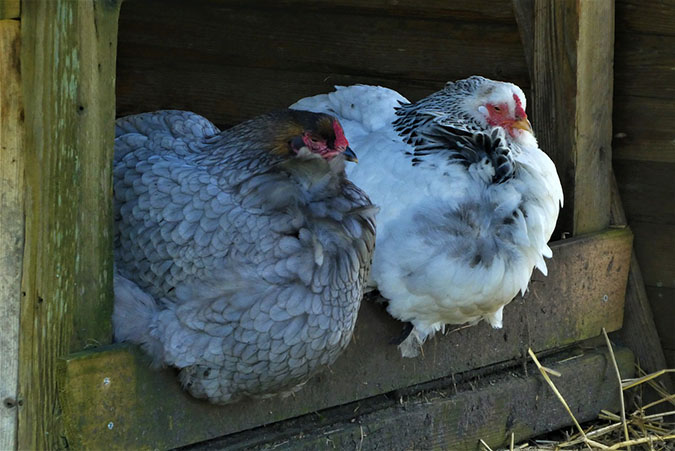
Image by Elsemargriet from Pixabay
Chicken Coop Design: Meeting Your Chickens’ 6 Basic Needs
If you are reading this article hoping to figure out the absolute best coop option available for raising chickens, you’re going to be disappointed.
That’s because the coop, as we know it today, is more about what humans want than about what makes chickens happy.
Depending on your location, regulations, and preferences, you might decide to go with a movable chicken tractor, a fixed coop and run, or a fixed coop with free-range access or paddock areas.
You can raise healthy, happy poultry in any of these chicken coop designs, as long as they meet your birds’ 6 basic needs, provide them with enough space to keep your chickens healthy and happy, and make it as easy as possible for you to manage poop and thwart predators.
The 6 Basic Needs of Chickens
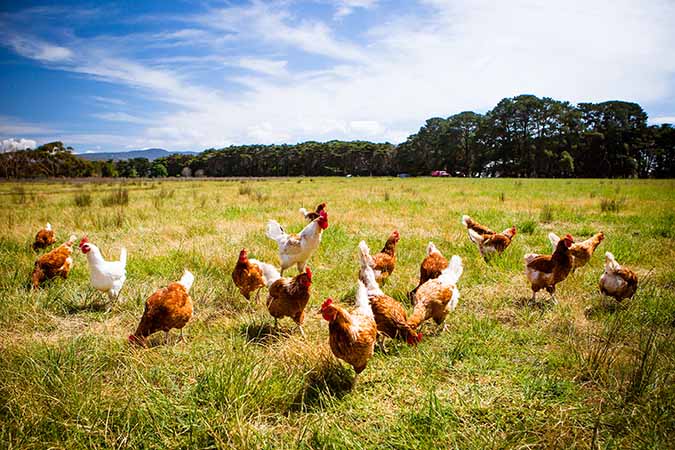
From a chicken’s perspective, its needs are basic:
- Fresh air
- Clean water
- A patch of dirt to use as a dust bath
- Lots of forage (particularly insects)
- Options to let it escape from predators
- Enough freedom of movement that it doesn’t have to spend all day standing in its own poop
Sometimes it needs a little private time, away from the rest of the flock. If it’s a broody hen, then it also wants a safe place to nest, undisturbed, for about 21 days.
The Last-Century Chicken
If it had been a backyard chicken a hundred years or so ago, it may have roosted in the barn with other animals, roosted in a tree, or found shelter around the porch of the family that threw it scraps.
Maybe it spent its nights in a designated outbuilding reserved just for chickens, but it probably wasn’t anything like the luxury chicken manors found on sites like Pinterest today.
It probably didn’t have a nest box. Eggs were often collected by children in a manner resembling an Easter egg hunt, since the hen’s goal was to hide its eggs for safekeeping until it had enough to make it worth risking life and limb to set a nest.
As long as it laid eighty or so eggs a year and managed to hatch a brood of chicken replacements once in a while, the family that let it forage in the yard was content to keep the bird around.
As far as predator protection went, the bird and its flock mates kept watch and used elaborate vocal communications to warn each other when trouble was near. If there was a rooster among them and the flock was attacked, he might defend the hens in his care to the death, if necessary.
Mamas would also protect their chicks by sheltering them in her wings.
You May Also Enjoy:
“5 Excellent Reasons to Keep Backyard Chickens”
But, among mature hens, with the moral imperative to survive and reproduce hardwired into their chicken nature, the expression “you don’t have to be faster than a bear, just faster than the guy behind you” usually applied.
Weak or sick hens were often pecked to death by stronger hens for the health and safety of the flock.
And though the birds may have really appreciated it when the lady who lived in the house threw them kitchen scraps or a handful of grain, they’d watched her wring enough chicken necks to realize they should scatter if she got too close.
How Things Have Changed

Image by Corinna Stoeffl from Pixabay
Things have changed a bit in the last hundred years.
As more areas are developed and populations increase, so does predator pressure on livestock. And it’s not just your random roaming mountain lion (which is now a rarity in the suburbs) or a wily coyote.
Now, chickens have to be careful about domesticated dogs and cats, escaped pet snakes and ferrets, car traffic, and even overzealous or malicious neighbor children. Top that off with all the local legal ordinances, HOA requirements, and other lethal hazards in our environments, and we’ve got to rethink the way we raise chickens.
Toward that end, let’s take a look at chicken space needs and how that ties into chicken coop design.
Chicken Coop Design: How Much Space Do Chickens Need?
A hundred years ago, eggs were eaten when available and chicken meat was reserved for special occasions. Now, the average American eats 90 pounds of chicken meat1)http://www.nationalchickencouncil.org/about-the-industry/statistics/percapita-consumption-of-poultry-and-livestock-1965-to-estimated-2012-inpounds/ and about 250 eggs2)https://www.uspoultry.org/economic_data per year.
In fact, chicken-based products rank No. 3, just below bread and dessert, among our sources of calories in the American diet.3)http://www.health.harvard.edu/healthy-eating/top-10-sources-of-caloriesin-the-us-diet
Living Space for Factory-Farmed Chickens
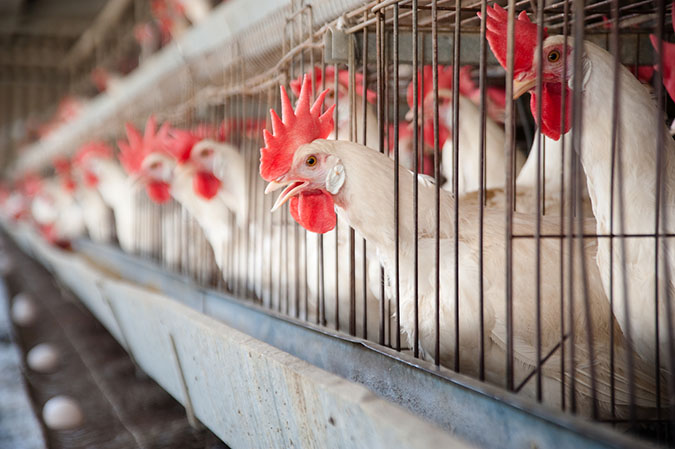
The amount of space and quality of life considered suitable for raising chickens seems to have declined in direct proportion to the amount of chicken meat and eggs we want to eat. Today, your grocery store egg layer gets about a sheet-of-paper-sized allotment of space and shares a battery cage the size of a filing drawer with five to nine other hens.4)https://en.wikipedia.org/wiki/Battery_cage
Your typical grain-fed broiler gets only eight-tenths of a square foot per bird.5)http://www.nationalchickencouncil.org/industry-issues/animal-welfare-forbroiler-chickens/
“Free-range” birds need only 2 square feet of space outdoors to qualify and “pasture-raised” requires 108 square feet per bird.6)http://certifiedhumane.org/free-range-and-pasture-raised-officiallydefined-by-hfac-for-certified-humane-label/
All of us who are concerned about the state of our factory-farmed food system would love to give our flocks as much room to roam as their hearts desire. But sometimes you’ve only got a limited area to work with when it comes to chicken coop design.
And when you factor in the costs of predator protection, less space starts to make a whole lot more sense.
The Ideal Amount of Space for Chickens
When it comes to chicken coop design, how much space do chickens really need to be healthy and happy?
We’re not talking about how much they can survive in, but more like what amount of space would be enough to keep you from having to trim their beaks to keep them from pecking each other to death.
You May Also Enjoy:
“The 13 Best Chicken Breeds for Cold Climates”
“Indoor Fodder System: How to Grow Food in Small, Dark Places”
The answer is, “less than you might think, but more than factory farms allot.”
Right-Sizing Your Coop
As Marjory tells us in her Grow Your Own Groceries video series, you will need about 4 square feet of space per chicken in your chicken coop design if your flock will be allowed to forage outdoors most of the day.
If your chickens will be confined full-time, then you need to add an additional 10 square feet to that number. If you have an 8-foot-by-8-foot coop, or 64 square feet of chicken space, you can protect 16 chickens for overnight lodging and only 4 chickens for full-time living quarters.
But as Marjory also points out in her video, a suburban backyard may be best suited for about two or three hens if you intend to allow your chickens unfettered access to your landscape.
Cost Considerations
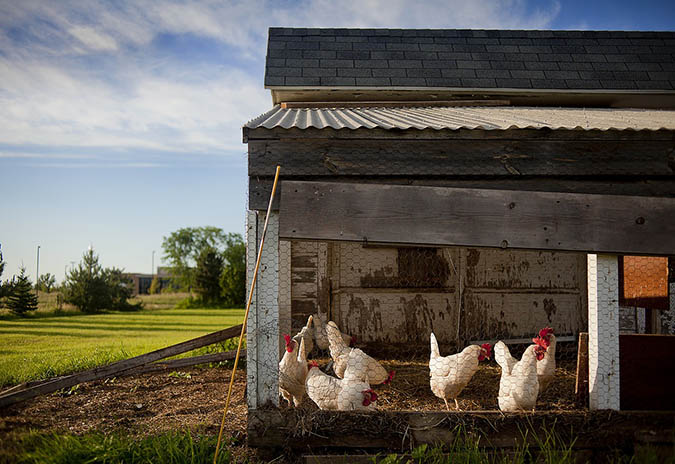
Image by William Dais from Pixabay
Building or buying coops can be expensive—even if you free-source your materials by using discarded pallets, scrap wood, or non-traditional building materials.
The larger your chicken coop design, the more labor intensive it will be to build and the more space you have to maintain. It may also mean more regulations to navigate and more hoops to jump through. Additionally, if you live in cold-climate areas, smaller coops that keep chickens in close contact are warmer without supplemental heat.
So, bigger is not always better when building a coop. However, for overall chicken health and happiness, the more outdoor foraging space you can provide the better.
These space suggestions are just a starting point for determining your coop size and style of raising chickens.
Chicken Coop Design: Addressing Predators and Poop
All chicken owners need to think about two major things: predator protection and poop.
Chicken books and blogs often break these ideas down into more categories. But for simplicity and easy memorization, we settled on these two concepts as the big ideas chicken keepers should address in their chicken coop design to provide safe, healthy habitats for chickens.
Predator Protection
Many chicken owners will tell you that the hardest part about keeping chickens is keeping them safe. When you confine chickens to a limited space, you also limit their ability to protect themselves from predation.
Also, when you invest your time and resources into caring for your flock, you don’t want to face the 40 percent loss rate that would occur if your chickens were not housed in a predator-proof coop.7)http://www.thehappychickencoop.com/a-history-of-chickens/
You May Also Enjoy:
“Cheap, Cheep! 4 Novel Ways to Feed Chickens for (Almost) Free”
“TGN’s Favorite Seed-Starting Equipment”
“Cold-Weather Chicken Care: 11 Quick Ideas to Improve Chicken Comfort”
Suburban development has placed pressure on wildlife to seek new habitats and find alternate ways of feeding themselves. As a result, suburban areas are sometimes the most predator-prone places of all.
Add to that the number of backyard pets eager to express their genetic history (i.e., dogs descended from wolves, house cats from jungle cats), and you’ve got lots of incentive to place priority on creating a chicken coop design that’s rock-solid.
Ways Predators Can Breach a Coop

Image by danny moore from Pixabay
Here are a few predator facts to be aware of when planning predator protection in conjunction with your chicken coop design:
- An owl can fly through an open window and carry away a small chicken.
- A fox or digging dog can tunnel under a foot of dirt to get to your chickens.
- A determined raccoon can claw through chicken wire, reach a paw through openings over an inch wide, and open many doors.
- A bear can tear a door from its hinges.
Planning All-Around Predator Protection
Given these examples, as you are planning your chicken coop design, you will want to consider predator protection overhead, underground, and all around (e.g., windows and eaves).
This includes measures like the following:
- Burying wire mesh (better than chicken wire) underground around the perimeter of your coop or placing it underneath moveable coops, over windows, around eaves, and over any openings otherwise not protected
- Building a floor in a fixed coop or elevating a coop off the ground to deter diggers
- The use of electric fencing, motion-sensing lights, or even a well-trained livestock guardian dog (LGD)
- The use of overhead netting if flying predators (e.g., hawks, owls, magpies) are a big concern—or keeping chickens confined until they are full sized
You may also want to keep separate storage and feeding areas and make egg collection a frequent activity.
Many predators, such as bears, snakes, and opossums, are more interested in your chicken feed or eggs than in eating your chickens. By removing red-carpet invites like a feed trough housed in your coop and by emptying nest boxes daily, you can discourage some predators.
If there are other chicken keepers in your area, talk to them to find out what kind of predator pressure they have experienced to determine where to focus your efforts and what to expect.
Poop (Ventilation and Cleaning)
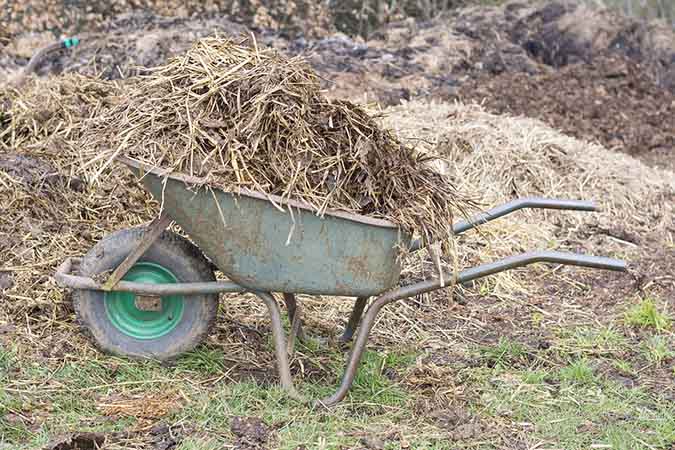
Image by Sabine van Erp from Pixabay
Yep, we just said “poop,” not “manure.” When the thick, putrid stink of fresh chicken droppings first hits your nasal passages, you’ll understand why.
This stuff doesn’t come out as lovely, garden-friendly manure.
It’s as rank and nasty as our stuff is until the freshness dissipates, which—depending on degree of soppiness and external humidity—can be minutes to hours.
How poop is treated in the collection process also determines whether it is useful manure or nuisance “feces” (as it is often referred to in city ordinances on chicken keeping).
Managing the Smell
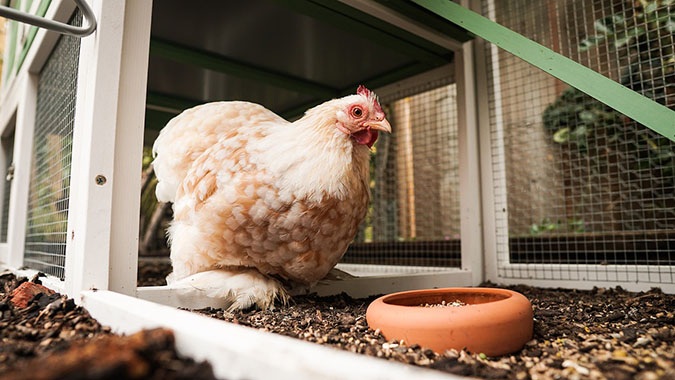
Chickens may have just as many olfactory senses as human beings,8)http://www.wardhenline.com/uncooped/behavior_senses so managing poop odors is as important for your chickens as it is for you (and your neighbors).
For indoor areas, good ventilation is key.
- You can use wire-mesh covered windows or vents for this purpose and open coop doors during the day. Chicken coop design that places windows on opposite sides of the coop with access to the prevailing winds can be helpful.
- However, keep in mind, ventilation is good, but drafts in extremely cold weather are bad.
- For cold-weather areas, avoid placing ventilation openings directly across from nest boxes or roost bars.
- For warmer climates, feel free to take advantage of cross breezes over roost bars. Or better yet, opt for an open coop, with plenty of fresh air for your chickens’ olfactory pleasure.
Other ways to minimize poop odors include adding a layer of fresh litter to poop-catching surfaces (e.g., straw, wood shavings, or cardboard chips on floors) or using a square head spade to scrape up manure and ladle it into a lidded bucket on a daily basis.
Alternatively, if you use a chicken tractor instead of a coop, you may need to move your chickens once or twice daily to keep them from spending the day standing in their own poop or creating problems in your soil from excessive nitrogen and phosphorous.
You May Also Enjoy:
“How to Grow Chicken Feed (The Easy Way)”
Except with a chicken tractor–style coop, you will need to clean up the poop in the coop—and the more often the better if you want to cut down on pests, attract fewer predators, minimize the potential for health issues in your flock, maximize compost for your garden, and remain friendly with your neighbors.
(NOTE: Some people also use the built-up litter method to control odors, generate a little heat during the winter, and produce some nice compost for their spring garden.)
Chicken Coop Design With Cleanup in Mind
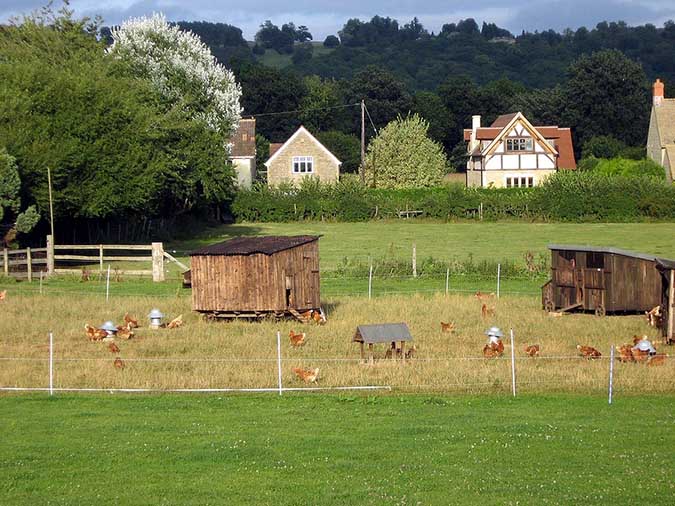
So, an important consideration related to poop and chicken coop design is easy cleanup.
If considering an elevated coop, it’s a good idea to bring it up to waist height and make sure you can reach all parts of the coop by bending at the waist rather than hunching. This way you can use a hand shovel, dust pan, and brush for easy cleaning. In larger elevated coops, this may require more doors for comfortable cleaning access.
A coop that is tall enough to stand up in with easy-to-sweep floors or pitchfork-accessible areas also works. And the fewer unnecessary horizontal poop-catching surfaces, the better.
Bottom line, the easier your coop is to clean, the more likely you will be to clean it.
A clean coop contributes enormously to chicken well-being. It also cuts down on the likelihood that neighbors will take offense over your keeping chickens. Plus, fresh poop has a lot more benefits for your compost pile than old, dried droppings, so collect it early and often.
If chicken poop accumulates in outdoor run areas or heavily trafficked chicken hangouts, occasionally adding some kind of mulch material or hosing down the area to dilute and distribute can help.
You May Also Enjoy:
“How to Make Bone Broth in 5 Easy Steps + Benefits & Uses”
You can also minimize poop plots by using movable pens or paddocks to direct chicken activity.
Once you’ve established how much space you need for the number of chickens you want to keep and how you want to manage the two chicken biggies of poop and predation, you can move on to choosing the chicken coop design that works best for you.
Remember, there is no one perfect coop for everyone. But, by thinking through these coop considerations ahead of time, you’ll be well on your way to designing or choosing a coop that’s perfect for you.
What Do You Think?
What else should people consider when it comes to chicken coop design? Do you have any suggestions for how to meet your chickens’ 6 basic needs? Share your thoughts in the comments below!
________________
This is an updated version of an article that was originally published on January 12, 2019. The author may not currently be available to respond to comments, however we encourage our Community members to chime in to share their experiences and answer questions!
The Grow Network is a participant in the Amazon Services LLC Associates Program, an affiliate program designed to provide a means for our team to earn fees for recommending our favorite products! We may earn a small commission, at no additional cost to you, should you purchase an item after clicking one of our links. Thanks for supporting TGN!

The Grow Network is a global network of people who produce their own food and medicine. We’re the coolest bunch of backyard researchers on Earth! We’re constantly sharing, discovering, and working together to test new paths for sustainable living—while reconnecting with the “old ways” that are slipping away in our modern world. We value soil, water, sunlight, simplicity, sustainability, usefulness, and freedom. We strive to produce, prepare, and preserve our own food and medicine, and we hope you do, too!
References
| ↑1 | http://www.nationalchickencouncil.org/about-the-industry/statistics/percapita-consumption-of-poultry-and-livestock-1965-to-estimated-2012-inpounds/ |
|---|---|
| ↑2 | https://www.uspoultry.org/economic_data |
| ↑3 | http://www.health.harvard.edu/healthy-eating/top-10-sources-of-caloriesin-the-us-diet |
| ↑4 | https://en.wikipedia.org/wiki/Battery_cage |
| ↑5 | http://www.nationalchickencouncil.org/industry-issues/animal-welfare-forbroiler-chickens/ |
| ↑6 | http://certifiedhumane.org/free-range-and-pasture-raised-officiallydefined-by-hfac-for-certified-humane-label/ |
| ↑7 | http://www.thehappychickencoop.com/a-history-of-chickens/ |
| ↑8 | http://www.wardhenline.com/uncooped/behavior_senses |
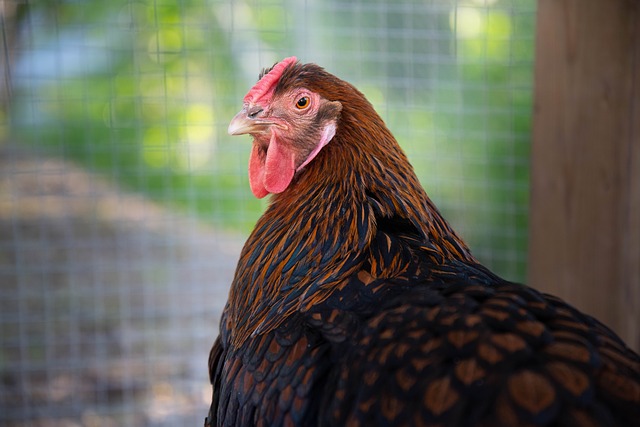
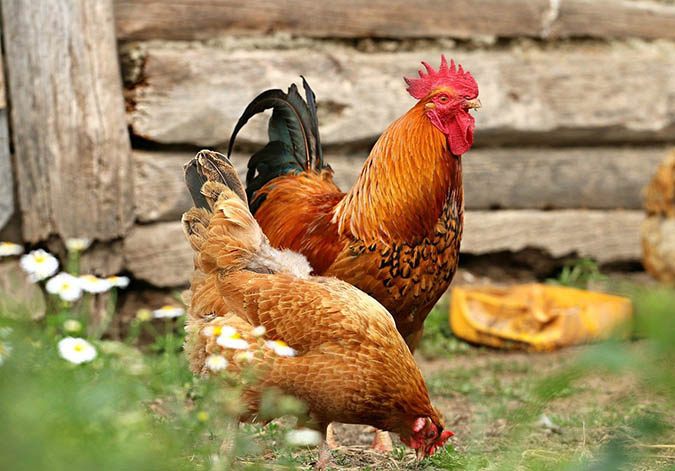







COMMENTS(5)
My poor birds refuse to roost in their coop. They stay on top of it, even in the worst weather. I had to put a net over the top so owls couldn’t swoop down on them at night. I’ve built them several different housing options, trying to find something they’ll like. But the only time they go inside sometime is to lay eggs, and they all want to use the same nesting box.
Hi Scott. Years ago, my brother rented from a guy who had chickens, and didn’t take care of them. The chickens would go to the coop every night, however, the landlord wouldn’t get back to the property until 4 a.m. the next morning. If I was at the place with my brother, I would shut the door at a specific time. They felt safe, and as a result, would automatically go back to the coop every evening. However, when we left to go back to my place they did not get the care that I gave them. Then when we returned, the chickens were all over the property, and as high as they could get by dark.
What I did as a result, was round up all the birds, and take them back to the chicken coop. After a few days of rounding them up, they went back willingly and I would then close the door and lock them in for the night. I don’t know if this would help you any, however, I thought it wouldn’t hurt to share this experience. Maybe it will help you and others.
Blessings
Hey Scott, if you catch the chickens (and that may be a job!) and keep them in the coop for a few days not letting them out they may get into roosting in the coop. Also when you do let them out the first few nights be there and kick them off the top with a long stick or whatever.
I spent a long time training a free range flock to roost in a tree away from the house. They wanted to be as close as possible, but that meant the droppings were close and the rooster was way loud. My family got irate… so I ended up putting them in a temporary pen neat a tree further out and completely discouraging them from roosting nearby. It took some time and diliegence, but once I got the flock there they stayed there for years teaching the new birds when added to the flock.
We’re building a “racken” house like the ones Joel Salatin has made famous among the permaculture crowd. I’m hoping that it will cut down on the constant harassment of my rabbits by rodents. The chickens sure do love the larvae that the rabbit poo contains but I’m thinking the spreading of the rabbit poo by the chickens might cut down on the insects that lay their eggs in it.
An effective way of minimizing odors and managing feces is to use biochar as part of the bedding, provided that the biochar is made from organic matter (dried branches or woodchips, dried corn cobs, or any dried plant material). Biochar absorbs odors (which helps reduce flies), retains the nutrients contained in the manure, lengthens the time between bedding changes — and after it’s done it’s job in the coop, the inoculated biochar can be added to compost or the garden.
It’s perfectly fine, even beneficial, for chickens to ingest biochar, as it provides grit, absorbs toxins, and can be helpful against internal pathogens.
Yet another biochar benefit: it is a natural desiccant. Combining biochar with stored feed can prevent mold and mildew by absorbing excess moisture.
There are multiple videos online on ways to make biochar. This video provides good clear explanations using small containers to create biochar:
https://www.youtube.com/watch?v=plJ34fekM2E
In this case, he used holes at the top near his chimney to burn off escaped gasses from the inner chamber. That works, but it is more efficient to add holes at the lower sides of the inner barrel (the technique we use) because then as the gasses are released at the bottom, they are burned low in the barrel and help to heat the contents of the inner barrel, rather than having the heat escape at the top.